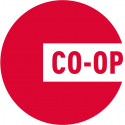Orientation and First Weeks
On the very first day, I activated my NRC email and synchronized this email with Microsoft Outlook. Also, I learned how to activate accounts for research computers and personal computers. Orientation consists of weekly instruction emails from NRC headquarters and a few online workshops provided by NRC and the Canada School of Public Service (CSPS). Weekly instruction emails listed what I have to do each week such as making a signature in my email, recording my work time, reviewing NRC policies, etc.
Also, I needed to take some workshops about security, work ethics, and safety issues. I was impressed by taking workshops about security and safety issues. Since NRC is one of the government organizations, security issues always matter not to conflict with the interest of the government of Canada. Not only this, NRC works on many experiments involving lethal chemicals and explosive materials. The workshop of the Hazard Prevention Program(HPP) informed me about how to deal with emergency situations, what to observe and so on. This was very useful for me because I should work on the project handling the machine generating 600 Volts of power.
Not only this, my supervisor took me on a tour of all equipment staying outside of the office building. He and I went to see all the devices used in the project and a control room. He explained what each piece of equipment is for and how it will be operated in the future. With no knowledge of engineering, it was not easy for me to grasp all the equipment at once. However, it was a great introduction to the project. After this short tour, I had a project team meeting and said hell to other project team members. During this meeting, I was told much more detailed information about data acquisition in this project during the upcoming Co-op term.
Day to Day
My supervisor told me I could work remotely twice a week so I went to the office three days a week. If necessary I often went to the office five days a week. When I got to the office, I always started by checking my email and Microsoft Teams. I had two biweekly meetings; one was for the project I worked on and the other was for the team I belonged to. I had to report what I had done so far for two weeks and shared the difficulties with others. Other than these meetings, I mainly worked on sample LabView programming based on hypothetical situations or sometimes dealt with software issues coming from LabView. I often worked on things not related to LabView. I installed some equipment such as batteries and a controller on the panel by helping my team member and this made me understand the project more comprehensively. Sometimes I went out with my team members to see how the experiment is prepared in other parts.
Learning and Adaptation
As a mathematics graduate student, every single thing in this project was new to me. During this Co-op term, I spent much time figuring out how the process is going in this project. I asked a lot of questions to my team members who studied mechanical engineering and electrical engineering whenever I saw something I had never seen. They always responded to my question with every detail I should know. Sometimes, they asked me to draw wiring schematics based on their rough sketches of the project. By drawing these diagrams, I was able to improve my understanding of this project.
Since I was not familiar with LabView, I talked to NI technical support several times to get help via emails, calls, or Microsoft Teams meetings. These were great opportunities for me as an international student to improve my communication skills. Moreover, I learned that I have to cc my project team members on every single email whenever I communicate with a third party. This helped me to get feedback on my communication from other team members and share important information with the team. Although it took a time to get used to cc’ing others, this is one of the easiest ways to learn new things from co-workers.
Accomplishments and Challenges
During this Co-op term, I mainly focused on understanding the project and learning LabView and its environment. Unlike other programming languages, LabView uses block diagrams to create a program. It was awkward for me who always coded line by line in C and Maple. In spite of this difficulty, I tried to build up small examples using LabView in the beginning. This made a progress in coding more advanced examples which can be used in the project.
There was a huge challenge with respect to installing LabView on a research computer and a controller. LabView is not a commonly used programming language in the industry according to one of my team members. That is, it was difficult to get helpful information through Googling. Also, NRC has very strong security protections on every research computer. Due to these factors, our team was not able to install this program at once. For three weeks, we had three to four meetings a week with NI Technical support (NI is the manufacturer of LabView.) in order to install and activate LabView successfully. During the installation, we removed the installed packages and reinstalled them a couple of times each of which took two to three days on average. With ceaseless effort from my team member and me, our team ended up installing LabView on both devices without any problems. After this challenge, it was much easier to install and activate additional NI packages on the research computer.







